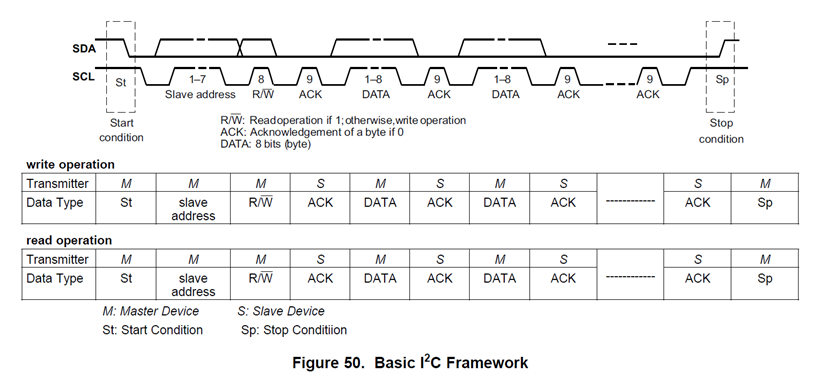I've been reading the PCM1865 datasheet and can't find out how to read or write the registers over a I2C interface. Figure 50 on page 64 shows the same data schema for read and write operations.
This forum threads from 7 years ago mentions how to read the registers value
e2e.ti.com/.../1669849
but how do I write to them?
Do I need a "Repeated/continued start"?
How do I change page? Does it have its own I2C schema?
Next, I have some questions about reserved bits inside some registers: registers 41, 42, 43, 51 to 54 (maybe among others) have reserved bits with the description "Reserved. Do not access.". If I want to configure the PLL manually (for example) I would need to write to these registers and "access" to them.
Then there are some registers like 97, 114, 115, 116 or 117 that say to write a specific value to the reserved bits but the register itself is read only, which makes no sense (or maybe the register is "R/W" but the "/W" got erased). This is not really a problem as long as the registers are actually read-only.
Thank you very much



